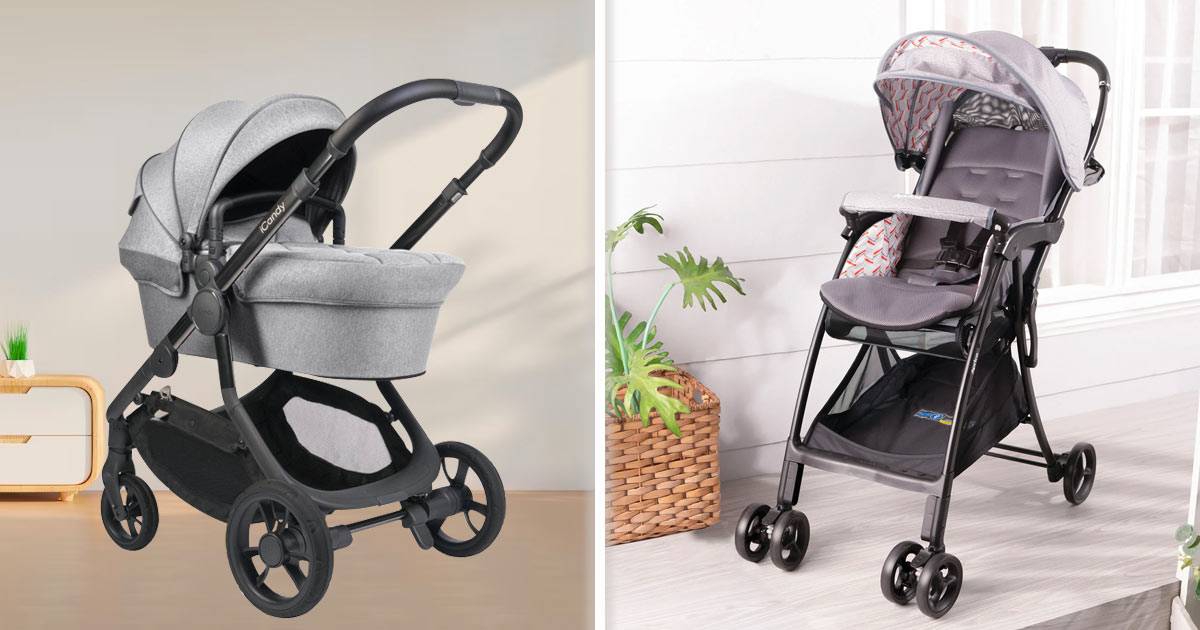Pram vs Stroller: Choosing the Perfect Ride for Your Baby

Currently, when parents wish to venture outdoors with their newborn for a stroll in the park or a picnic, they commonly opt for wheeled baby carriers. These carriers encompass prams, strollers, buggies, and various others, chosen according to the child’s age. Among these options, strollers and prams stand out as the most widely favored. While some individuals may perceive prams and strollers as synonymous, it’s important to note the pram vs stroller differences before making the right choice.
What are Prams?
A pram is a classic baby carriage, featuring a flat recline that makes it particularly suitable for newborns. This design fosters optimal conditions for healthy breathing and contributes to the development of the baby’s lungs and spine. However, as infants reach the age of six months and gain the ability to sit upright independently, the convenience of a pram diminishes, as it restricts their mobility.
A traditional pram stroller, in general, poses a challenge such as limited storage, cumbersome folding mechanisms, and difficulties in portability. Their bulky and heavyweight nature can be inconvenient for parents on the go. While the majority of prams share these characteristics, there are variations crafted from diverse materials. Despite their usual heft, the market offers some high-end lightweight prams, providing a potential solution for those seeking a balance between tradition and practicality.
What are Strollers?
A full-sized stroller is both spacious and sturdy, making it a popular choice. Typically designed to accommodate older babies and toddlers, it remains a reliable option until they can cover longer distances independently. Despite its durability, weight limitations persist, so it’s crucial to ensure your child doesn’t exceed the specified weight restriction. While full-sized strollers may lack a fully lay-flat recline, many provide a slight recline to facilitate on-the-go napping.
For those on the move, lightweight or travel strollers are ideal, especially for vacations. They boast easy and quick folding mechanisms, minimizing the space they occupy on buses or trains. Some even come equipped with shoulder straps, collapsing into a compact size resembling a small bag that you can effortlessly sling over your shoulder. However, these strollers tend to be more basic, and in general, strollers may be less maneuverable compared to prams. The thinner wheels of lightweight strollers can result in a bumpier ride with less shock absorption.
Stroller vs Pram Differences
Below are some notable distinctions between a pram and a stroller:
Design
Prams are crafted for newborns, offering a flat surface for them to sleep or lay down comfortably. Their design, resembling wheeled baby carriers, is ideal for infants. Prams uniformly provide a flat and reclining surface, ensuring optimal comfort and support for newborns, though they may appear bulkier than strollers. In contrast, strollers from Baby Product Suppliers are designed for older babies who can sit upright independently. Strollers feature an upright seat, a push handle, and wheels, allowing the child to sit straight easily.
Weight
Prams typically weigh between 10 kg and 15 kg, but certain designs may reach up to 18 kg or 20 kg. Many prams are bulky and less portable, although some high-quality lightweight models weigh as little as 6.5 kg and can support up to 22 kg. The weight limit for prams varies by model, ranging from 10 kg to 15 kg, with some capable of holding up to 25 kg to 30 kg. Even lightweight prams have a maximum load capacity of 10 kg.
Comparatively, strollers are generally lighter, easily foldable, and more portable than prams. Stroller weights vary, with some as light as 4 kg, others around 10 kg, and heavier models weighing 1 kg or more. Double and triple strollers tend to be heavier, with lightweight models being an exception.
Safety
When it comes to pram safety, many lack safety belts and harnesses, posing a risk if the baby is left unsupervised. However, certain high-end prams include harnesses, and it’s advisable to opt for those models for better safety. In contrast, a reliable stroller is equipped with safety belts and a harness, ensuring heightened safety. Strollers often feature a 2-point, 3-point, or 5-point harness, considered especially safe for tiny babies with two chest straps, two waist straps, and a single crotch strap.
Age
Generally, a pram is essentially a wheeled carrycot designed for newborns who need to lie on a flat surface. It caters to infants, specifically from day one until they reach 6 months of age. On the other hand, strollers aren’t suitable for newborns; they become suitable when infants can support their heads independently, typically around and above six months old.
What to Consider When Choosing a Pram
- Longevity: Choose a pram with a convertible carrycot for lasting use.
- Budget: Find a pram within your budget by checking reviews and deals.
- Features: Pick based on your lifestyle – city life may need a travel system, while outdoor activities suit all-terrain or jogging prams.
- Age of the Baby: Consider the baby’s age; jogging prams may not be suitable for very small infants.
- Older Siblings: Look for double prams or attachments for handling a newborn and an older child.
- Storage Space: Ensure the pram fits in your home and car boot.
- Accessories: Check included items like sunshades and rain covers, and consider the cost of extras.
- Safety Requirements: Verify if the pram meets approved safety standards.
Choose Between a Pram vs Stroller for The Comfort of Your Baby
Whether you lean towards the classic comfort of prams or the versatile functionality of strollers, understanding the nuanced differences is key. Prioritize safety and longevity as you explore options tailored to your lifestyle and budget. Delve into the specifics of design, weight, and features, considering factors like your child’s age and the potential need for accommodating older siblings. Maximize convenience by evaluating storage space and available accessories. It’s not just about choosing a carrier; it’s about selecting the perfect companion for your family’s adventures.
